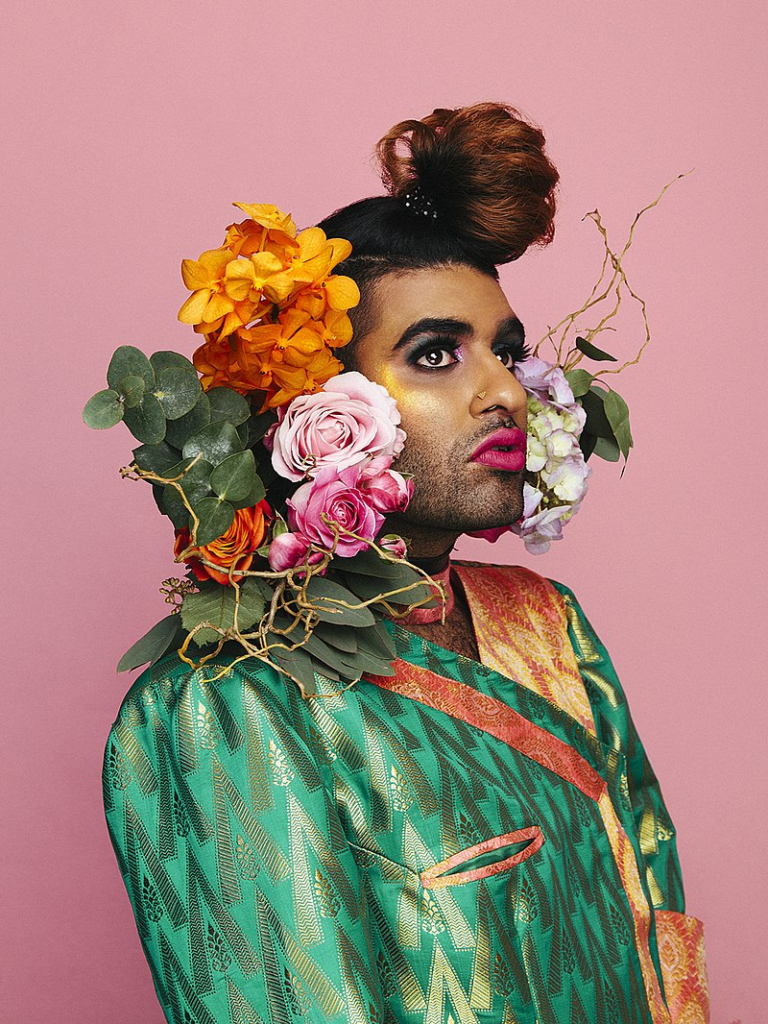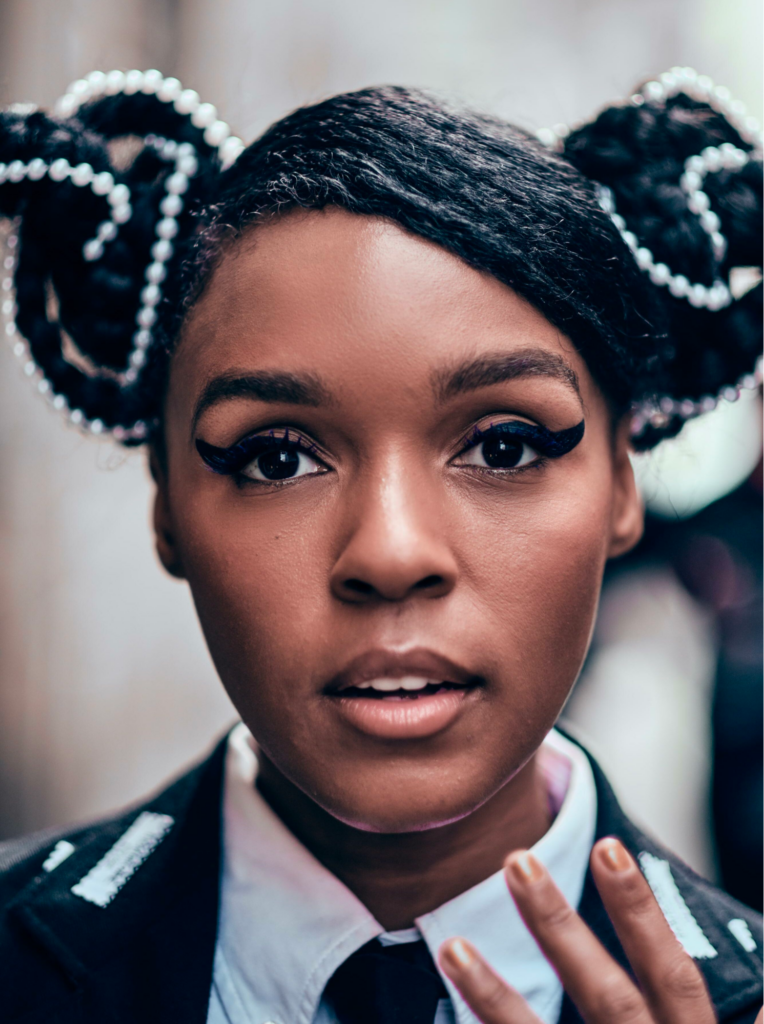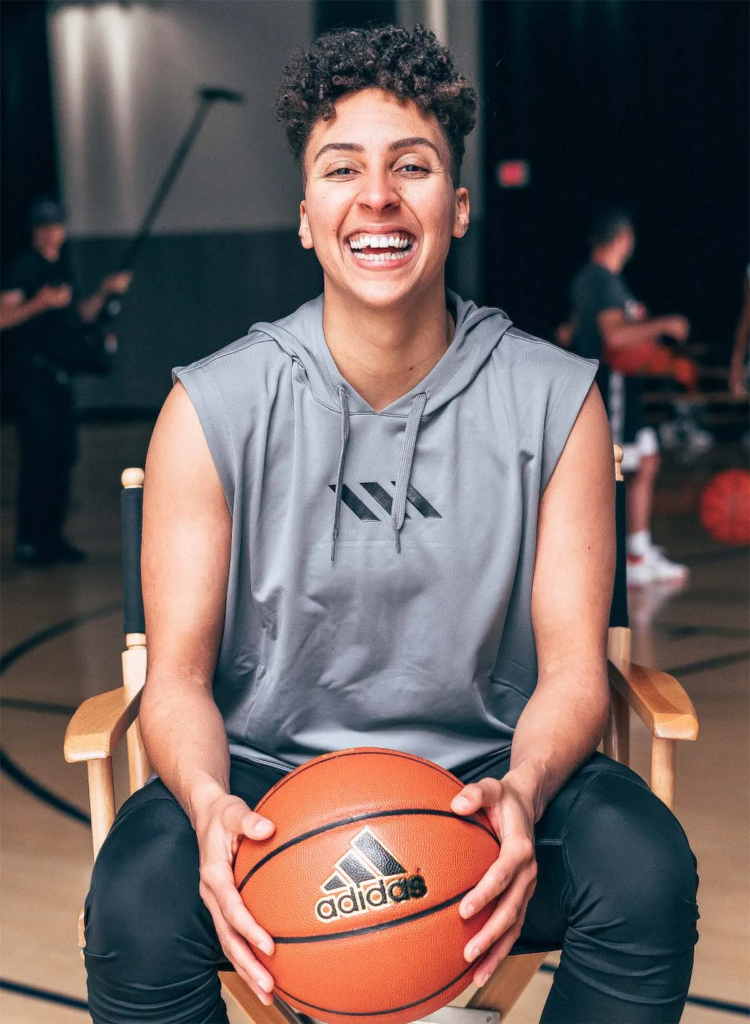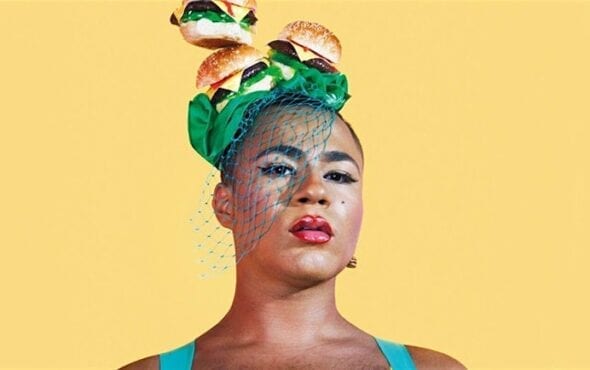When you hear the word nonbinary, what comes to mind? Perhaps you think of a third gender category or an X gender marker on official documents. Maybe you think of a recent rise in the popularity of they/them pronouns. Do you picture a white, thin, and androgynous person? Or all of the above? In reality, these are all misconceptions, stereotypes, and generalizations. Nonbinary as an identity category is expansive and not new; in fact, gender expansiveness has a rich history. Moreover, nonbinary individuals today are as diverse as those whose identities align with a binary gender. Today, approximately 11% of LGBTQ adults in the U.S., about 1.2 million people, identify as nonbinary. As nonbinary identities receive greater recognition—positive or negative—it is crucial to dismantle these misconceptions and validate and celebrate those beyond the binary.
Nonbinary is Expansive
Nonbinary is an expansive category; someone who is nonbinary does not fit neatly into the gender binary of man and woman. They may exist somewhere in between binary genders or beyond the binary completely. Their gender identity may be fluid or fluctuate. They may be genderless. Nonbinary is not a third gender, though nonbinary individuals are often subsumed into one monolithic category. Myriad identities lie beneath the umbrella category of nonbinary, such as genderfluid, genderqueer, agender, and bigender, just to name a few. Nonbinary identities also fall under the trans umbrella, since nonbinary folks do not align with the sex they were designated at birth. There are as many ways to be nonbinary as there are ways to be a man or a woman, and there are as many nonbinary identities as there are nonbinary people. The beauty of nonbinaryness lies in its unlimited potential; one is not restricted to binary gender ideals, norms, and roles.
Dismantling Stereotypes
Nonbinary folks exist beyond limiting stereotypes. Despite media portrayals and the select few individuals uplifted by social media algorithms, nonbinary people are not solely white, thin, and androgynous. Sure, these nonbinary folks do exist; however, nonbinary individuals can have an intersection of (often marginalized) identities. Nonbinary folks can be BIPOC, femme, masc, disabled, fat, and of any age. One’s gender expression does not define their gender identity, nor do their pronouns. Everyone’s nonbinaryness is valid no matter how they present, express themselves, or exist in the world. You cannot tell someone’s gender simply by looking at them. There are no rules to being nonbinary.
On They/Them Pronouns
They/them pronouns are not a recent addition to the English language. In fact, the use of they/them as a singular pronoun dates back to the 14th century. The earliest recorded use of “they” as a gender-neutral pronoun was in 1386 in Geoffrey Chaucer’s The Canterbury Tales. Shakespeare also used the singular “they” in works such as Hamlet in 1599. Further, the use of neopronouns—pronouns other than he, she, or they—are not new, despite the prefix; the first documented use of neopronouns was in 1789. While they/them pronouns are widely considered to be gender neutral, and many nonbinary folks do use them, nonbinary individuals may also use gendered pronouns, neopronouns, a mix of pronouns, or no pronouns at all. The adoption and widespread usage of they/them pronouns is just the tip of the iceberg in the fight for trans rights.
Intersectionality & Identity
Nonbinary individuals with an intersection of identities, especially BIPOC nonbinary folks, face multiple forms of overlapping oppression. Race and gender are inextricable from one another; someone’s race shapes their gender, and vice versa. Historically, and still today, racism and queer- and transphobia work to erase and invalidate nonbinary and gender expansive BIPOC. Defining trans and nonbinary history is a tricky task as well, as nonbinary is a Western and relatively recent term employed to describe gender nonconformity and expansiveness. We cannot impose modern identity categories like nonbinary onto people of the past since conceptions of gender continuously change across time, place, and culture. However, we can observe histories as trans—without labeling the person themself—in cases where individuals transgress gender.
Indigenous Gender Expansiveness
Gender expansive* identities are not a recent development; gender expansiveness has existed across time among Indigenous cultures around the globe—and still today. Over 150 Indigenous tribes in what is now known as North America recognize some form of gender expansiveness, often referred to as the Indigenous umbrella term Two-Spirit. Two-Spirit was coined by an intertribal council in Winnipeg, Canada in 1990 to distance queer and gender expansive Natives from (discriminatory and/or inaccurate) Western identity categories and to unite the Native LGBTQ+ community. Two-Spirit reflects the spiritual connection an Indigenous person has to their gender, as well as the specific roles they may fulfill in their community. Many individual Native tribes in North America have distinct and culturally specific terms to describe gender expansiveness in their cultures, such as Needleh in the Navajo tribe and Lhamana in the Zuni tribe. Further, Indigenous gender expansive categories exist worldwide. Hijras in India, legally recognized as a third gender in 2014, have a recorded history of over 4,000 years of fulfilling specific spiritual cultural roles. Some other Indigenous gender expansive identities include Muxé in Oaxaca, Mexico; Māhū in Hawai’i and Tahiti; Waria in Indonesia; and Kathoey in Thailand.
It is important to emphasize that nonbinary is a Western identity category that rejects the gender binary, a colonial ideal that was violently imposed upon Indigenous peoples by European colonizers. Colonizers suppressed and even eradicated Indigenous gender expansive peoples, both because of their gender nonconformity and their spiritual nature and involvement in religious practices. While this recognition of Indigenous gender expansiveness is an important part of the conversation around nonbinary people and identities, it is not meant to conflate nonbinary identities with Indigenous gender expansive ones, to assert nonbinary as a “third” gender category, or to romanticize Indigenous gender expansiveness. These Indigenous gender expansive identities have specific cultural contexts that cannot be removed. Their inclusion in this discussion is intended to demonstrate that people historically, and still today, exist beyond the gender binary.
Further, the English language is limited in its ability to articulate ideas of gender beyond the binary. Western understandings of gender are rooted in the duality of the gender binary. The label itself of nonbinary describes what someone is not, as opposed to what someone is. Indigenous understandings of gender expansiveness can teach us to create space for nonbinary and gender expansive identities and individuals in our communities. Nonbinary people should be celebrated for their expansiveness and rejection of a set of gendered rules we’re socialized to believe. Being nonbinary is so much more than the lack of a binary gender; it is an act of defiance and reclaiming space. It is fully embracing your authentic self in spite of societal rules and norms. It is a freedom of expression and embodiment.
*I use gender expansive as a broader term than nonbinary in discussing Indigenous genders. Nonbinary is a Western identity category, while gender expansive is a more general and inclusive word to describe an experience of gender that extends beyond the gender binary.
Western Nonconformity
There have also been historical iterations of gender expansiveness in Western culture. One such individual, the Public Universal Friend, christened Jemima Wilkinson, was a Quaker in colonial New England in the 18th century. At 23 years old, Jemima nearly died from typhus. They believed that from their body arose a genderless spirit named the Public Universal Friend. The Friend preached their remarkable near-death experience throughout New England, grew a community of followers, and became somewhat of a religious celebrity. They dressed androgynously in both male- and female-coded clothing and rejected gendered pronouns. The Friend’s well-known life story shows that gender expansiveness existed in Western settler colonial societies—where the gender binary was rigid—long before nonbinary arose as a recognized identity category.
Crossing Gendered Lines
Much of history regarding gender nonconformity involves cross-dressing. Cross-dressing is one form of expression that transgresses gender, no matter the impetus behind it. Cross-dressing has been documented globally since ancient times. People of the past cross-dressed to achieve economic or social mobility, to obtain jobs, to enter marriages, or simply to express themselves authentically. Those who cross-dressed may not have had a complex relationship with their gender, though this is possible for individuals who cross-dressed for long periods of time (or even their whole lives). We do not see many histories of people of color who cross-dressed, as their stories are often suppressed or erased. Nzinga, Queen/King of Ndongo (present-day Angola), cross-dressed and ruled as a king from 1624 to 1653 and defeated the Portuguese army in a number of battles. Ch’iu Chin (1875-1907), a Chinese revolutionary, was a cross-dressing feminist who organized an uprising against the Manchu Dynasty. These are only two of countless BIPOC in history who upset the gender binary.
Anti-cross-dressing laws outlawed the practice of appearing in “dress not belonging to his or her sex” in 45 cities in the U.S. and myriad other countries between the mid-19th century and World War I. These laws remained in effect for decades; in San Francisco, it was illegal to cross-dress in public for more than 100 years, the law only ending in 1974. People faced harassment, violence, and criminalization for cross-dressing—and still do today. Those who cross-dressed may not be nonbinary or gender expansive according to our modern Western understandings, yet they demonstrated the malleability of gender and a transgression of the binary. Their stories are important in recognizing nonbinary identities today, as gender nonconformity is not a recent phenomenon.
The history of cross-dressing speaks to contemporary notions of nonbinaryness by demonstrating the power of expression through dress. People who cross-dressed embodied nonbinaryness as we understand it today through challenging norms and roles attached to clothing. Clothes themselves hold gender expectations, not gender. Simply being nonbinary and dressing according to one’s authentic expression is an act of resistance against these expectations. “Gender-neutral” clothing, as we see rising in popularity today, is frequently “masculine” leaning, neutral clothing—simple achromatic and boxy t-shirts, pants, and sweatshirts. There are often no bright colors or different cuts of clothing. Nonbinary expression is not limited to this so-called neutral dress. Nonbinary modes of expression and dress can vary across the clothing spectrum and are as wide-ranging and unique as each individual nonbinary person. They combat the rigidity of binary-gendered clothing. Individuals who cross-dressed illustrated that expression, specifically through dress, does not define one’s gender; though clothing is simultaneously a powerful mode of self-expression and authenticity.
Visible Nonbinary BIPOC Today
The struggle for visibility continues today, especially for nonbinary BIPOC. The fight stretches beyond X gender markers and widespread usage of they/them pronouns. A greater shift in societal consciousness is required for nonbinary folks, particularly those with intersecting marginalized identities, to receive the validation, respect, and celebration they deserve. Myriad nonbinary BIPOC are spearheading this movement today. Below is a list of some notable folks whose visibility, dedication, and activism support this ongoing struggle.

Alok Vaid-Menon (they/them) is a nonbinary American author, poet, comedian, and public speaker. They have authored three books: Femme in Public (2017), Beyond the Gender Binary (2020), and Your Wound, My Garden (2021). They are the creator of the hashtag #DeGenderFasion: “an initiative to degender fashion and beauty industries.”

Mauree Turner (they/them) is a Queer, nonbinary, Okie Muslim and the current Representative for Oklahoma’s 88th House District. They are the first Muslim elected in Oklahoma and the first nonbinary state-elected official in U.S. history. Their life’s work is dedicated to fighting for civil rights and community liberation.

Sasha Alexander (she/they/he) is a nonbinary trans and Black/South Asian artist, educator, and healer. They founded Black Trans Media, an organization that addresses issues of racism and transphobia through community organizing, art, media, and political education. Sasha’s work sits at the intersections of LGBTQ folks, youth, media, and gender and racial justice.

Janelle Monáe (they/them/she/her) is a Black nonbinary American singer, songwriter, rapper, and actress. They have received eight Grammy Award nominations, along with a number of other awards.

Layshia Clarendon (he/they/she) is a Black nonbinary American professional basketball player for the Los Angeles Sparks of the Women’s National Basketball Association (WNBA). They are the first openly nonbinary person to play in the WNBA.

Travis Alabanza (they/them) is a Black nonbinary British award-winning writer, performer, and theater-maker. Their writing has been featured in numerous anthologies; their work centers on gender, trans identity, and race.
Works Cited
“1.2 Million LGBTQ Adults in the US Identify as Nonbinary.” Williams Institute, UCLA, 22 June 2021, williamsinstitute.law.ucla.edu/press/lgbtq-nonbinary-press-release/.
“ABOUT.” ALOK, www.alokvmenon.com/about.
“About.” Blacktransmedia, www.blacktransmedia.org/about. Accessed 6 Sept. 2023.
“About.” TRAVIS ALABANZA., travisalabanza.co.uk/.
Alexander, Sasha. “Sasha Alexander.” SRLP (Sylvia Rivera Law Project), 29 Apr. 2015, srlp.org/team-member/sasha-alexander/.
BBC News. “A Brief History of Gender Neutral Pronouns.” BBC News, 22 Sept. 2019, www.bbc.com/news/newsbeat-49754930.
“Black History Month Means Black Trans and Nonbinary History.” MTPC, 11 Feb. 2021, www.masstpc.org/black-history-month-means-black-trans-and-nonbinary-history/.
Bortolot, Alexander Ives . “Women Leaders in African History: Ana Nzinga, Queen of Ndongo.” Metmuseum.org, 2019, www.metmuseum.org/toah/hd/pwmn_2/hd_pwmn_2.htm.
Brown, Skyler. “A Brief History of Nonbinary Gender: From Ancient Times to the Early Modern Period – Cloud Dancers Foundation.” Cloud Dancers, 8 July 2021, clouddancers.org/a-brief-history-of-nonbinary-gender-from-ancient-times-to-the-early-modern-period/.
Feinberg, Leslie. Transgender Warriors : Making History from Joan of Arc to Dennis Rodman. Boston, Mass. Beacon Press, 1996.
Heckel, Jodi. “Tracing the History of Gender-Neutral Pronouns.” College of Liberal Arts & Sciences at Illinois, 29 Jan. 2020, las.illinois.edu/news/2020-01-29/tracing-history-gender-neutral-pronouns.
“Mauree Turner.” Mauree Turner, www.maureeturner.com/.
Nambiar, Sridevi. “A Brief History of Hijra, India’s Third Gender.” Culture Trip, 1 Jan. 2017, theculturetrip.com/asia/india/articles/a-brief-history-of-hijra-indias-third-gender.
“Neopronouns 101 – Mermaids.” Mermaids, 10 Nov. 2021, mermaidsuk.org.uk/news/neopronouns-101/.
Parsons, Vic. “28 Non-Binary Activists, Politicians and Stars Who Are Proud, Visible and Making the World a Better Place.” PinkNews, 12 July 2021, www.thepinknews.com/2021/07/12/non-binary-awareness-week/.
Tagawa, Beth. “When Cross-Dressing Was Criminal: Book Documents History of Longtime San Francisco Law | SF State News.” News.sfsu.edu, Feb. 2015, news.sfsu.edu/archive/when-cross-dressing-was-criminal-book-documents-history-longtime-san-francisco-law.html.
Wikipedia Contributors. “Janelle Monáe.” Wikipedia, Wikimedia Foundation, 1 Jan. 2020, en.wikipedia.org/wiki/Janelle_Mon%C3%A1e.
